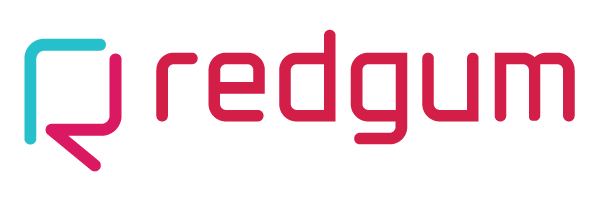
Preparing for your solution
This is to help you think about the know-how you have and how you can make best use of that know-how.
How do you identify your know how?
What is the best online relationship for you and your customers?
What is the best online model to deliver the value through?
What is the right revenue model to enable you to scale and see a good return on investment?
The know-how commercialisation plan

How to identify your know-how?
Most businesses, researches and anyone who has improved the way they do things has potential know-how that can be translated.
-
Look at what you know
Through the years, your organization has gained a wealth of experience and knowledge, managing to overcome challenges and creating forms and spreadsheets for each aspect of the business, from marketing, sales, operations, delivery, accounts management, and quoting.
You could leverage these resources to develop a cloud solution or phone app, which could improve your business performance, create a new product for your customers or vendors, or even generate a new revenue stream by helping your industry address a common issue you know a solution to.
-
What pains did you have?
How have you managed to solve these issues through process, spreadsheets or organising your people better?
Even if your solution is a bit clunky, only works with 1 or 2 people using it, we can usually translate this to a cloud platform that can scale as far as you want it to.
Your competitors probably suffer the same and will pay if you can provide a solution.
-
Where does it all break down?
If you can't think of a specific solution you have already found, think about the issues you have.
Often the opportunities come from crossovers between departments, between subcontractors, between your customers and your sales, implementation or support teams?
Many of the solutions redefine these relationships and supports or automates the interactions, ensuring they work “as they should” not “as they have evolved” to everyone's benefit.
-
Do you have an existing system?
Redgum provide a retrospective Redprint process to capture the IP embedded in existing non-cloud systems.
This can then form the basis for a new cloud offering that leverages the learning you have already made.

How do you plan for it?
Many who put their business online simply stick to the defaults and don’t get the most out of the Value their solution.
To help you think through the options that make sense for your solution here are a range of starter options that you can mix and match to create a unique Value delivery.
NOTE: This is not an exhaustive list, these are starting points for you to think about your solution and the value you provide.

What relationships are you supporting?
Each SaaS platform has a unique set of customers, users and other stakeholders. The type of relationships you want to support will shape the type of platform you end up building.
Here are a range of common models to start you thinking about what might suit your solution.
-
Business to Business (B2B).
This describes the releaitonship between two businesses, one a supplier, one the customer, it is the most basic and most common form but often isn’t the best extraction of Value.
Examples include Salesforce, JIRA, Google docs.
-
Business to Consumer (B2C)
These are the most common category, especially for retail sales and gaming.
If your know-how helps indiviudals, families or community groups then your looking for a B2C style business model, this will effect who, how and when you target your specific market.
-
Business to Government (B2G)
There is often a different set of criteria, different governance, different sales cycle and different definition of the customer for government so its worth considering how you setup your solution to best target government clients
-
Business for Business (B4B).
This is where the technology is used to provide or facilitate an end result, your staff (and sometimes the customer) work on the platform together to produce the result the customer is looking for.
Often this model is much easier to start and get going because your staff can fill in blanks while your still exploring.
Examples include Outsourced CFO, Employment Background Checks etc.
-
Customer to Result (C2R).
Customer to result, the provider becomes the product and your solution connects the provider and customer with functionality and a financial transaction.
These are typically discrete transactions for a clearly defined result.
Examples include Uber and AirBnB.
-
Customer to Specialist. (C2S).
Typically the solution facilitates an ongoing engagement between a provider and the customer.
Normally the provider is a specialist or niche and they provide an ongoing or complex result involving many steps and many transactions
Example Eat By Design, Redprint Deliver.

How will your value get delivered?
Its one thing having the raw capability, but for a successful solution, your users need to access that capability in a way that works for them and works for the growth of your solution.
Here are some different types of options delivery mechanisms to consider when thinking about your solution.
-
Function as a Service (FaaS)
This is the standard model for providing the functionality and structure to your customer and they work with as individuals or single teams.
The first and second generation software platforms your familiar with are straight FaaS models.
In some industries these have reached saturation and you need a different angle to break into the market.
Salesforce, JIRA, Google Drive, Microsoft 365.
-
Platform as a Service (PaaS)
The platform takes many participants, either from the one company or from several different parties and provides an enviroment for them to build on a single model.
Eg. Every department contributing to a digital twin of a newspaper.
-
As an API
If your know-how is a special function that many other applications can utilise, like speech to text, automating calendars etc then your customer is other App developers with the goal of getting them to include your service in their solution.
eg. Google maps addressing, google maps routing, speech to text APIs, blockchain etc.
-
Result as a Service
This is where your customer doesn’t see how “it is done”, they just provide their inputs and then get their result.
Often referred to as the wizard of oz technique, where the man behind the curtain does the actual work. This means your customer doesn’t see which parts are automated and which parts are manual (and they don’t care) as long as they get their result.
-
Ecosystem
An ecosystem provides rich functionality to mulitple parties generating a flow of value.
This can be supply chain or involve many discrete contributors, each doing their part to produce the whole.
These are very powerful as the “The whole becomes greater than the sum of its parts”.

Revenue model.
Paying is a key point of friction within any model, the flow of money can make or break your solution.
A revenue model is more than just a pricing model, a revenue model looks at the entire flow of money between your customers, your suppliers and yourself.
Quite often it is important to consider how your customers will make money (and thus afford your service).

Default Revenue models that often cause issues.
Many people don’t give much thought to how they will get paid, or what impact paying will have on their customers.
Here are the most common models and pitfalls you should consider before jumping in.
Ongoing subscription based on users. Sometimes users are a good scaling metric but only when the Value you provide is down to the individual user.
For many platforms it doesn’t matter to the customer if they have 20 users or 1 user signed up, they still get the same Value so they create a single account and share it around.
Percentage per transaction. This is a great model if you can make it work however, its usually causes a lot of friction for new adaptors because the cost to the customer scales up and they don’t get an economy of scale benefit.
Many customers have come to us to pay for a bespoke solution in order to avoid the transaction costs of their earlier stage solution.
Product sale. Selling a product as a one time transaction. The solution can facilitate the payment but there are typically lots of ongoing costs so there is a constant drive for new customers rather than supporting and earning from existing customers.
For retail solutions this is often what you are stuck with, so the solution should optimise for some other key factor like cost of acquisition of new customers in order to provide you scale.
License and support. This is a traditional model that includes a large upfront payment to “buy” a version of the solution and then charges support to ensure the customer can keep the solution operating.
Cloud systems typically don’t have new and old versions, they are continually upgraded so a single fee for infinite upgrades over the next 20 years is often a loss making model.
Advertising. If you have failed to find a real business model, use advertising. Its a highly contested market, but if you can position yourself right it can work. However, it can cause a lot of problems like the ones your seeing on social media today.
The key issue is the relationship with the user is not as “a customer”, instead the user is the product, so you are usually forced to manipulate the user in order for your platform to make money, rather than serviced for their best outcome. The choice of “what is the next feature to invest in” often isn’t aligned with “what is the best thing for the user”.

Guidelines for better revenue models
Each platform creates different dynamics between the various stakeholders, choosing the right revenue model is critical.
Find a metric native to the solution. If you can find a metric like active projects, active publications, results delivered etc. Doing this allows you
Make your customers money. If your platform can make your customers money they are usually happier to share some with you. It often has the bigger benefit that they becomes your “sales team” because its in their best interests to bring in others.
Find a point where the Value is inherent, a transaction point where the user can see the finished result and just needs to pay to get it.
Not charging the users directly. If you can provide the Value for free, your users are likely to grow much faster and they find it easier to stay with you.
Using knowledge gained from the use of the platform for consulting or advice to another party. Gartner does this well, they provide magic quadrants to everyone, then charge for specific consulting to government and large organisations.
Selling data/meta data. This can cause a lot of concern but if you are clear about what you are doing and only provide anonomised and aggragate data rather than raw data you are usually able to benefit.
Build up a much larger picture. By using a platform to collect common data like google maps, you can provide a range of different services based on the one large pool of data that helps everyone.

The Know-how Commercialization Plan
The above sections are a lot to deal with if you are not familiar with the online world. Redgum have partnered with Transform Studios to help you work through these formative stages.
The Know-How Commercialization Plan is a series of workshops for you to understand what you actually have, then what is possible and finally, what form is the best outcome for you and your solution.
The results of this plan is a model and costing estimate you can use to make an informed decision about your next steps.
